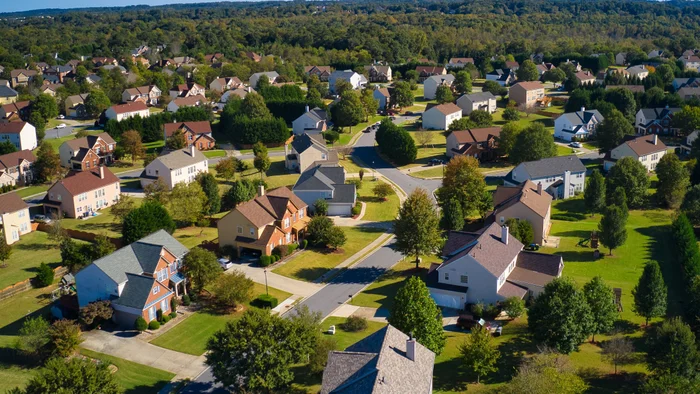
Updated 10:14 a.m. UTC Nov. 15, 2023
Editorial Note: Blueprint may earn a commission from affiliate partner links featured here on our site. This commission does not influence our editors’ opinions or evaluations. Please view our full advertiser disclosure policy.

Rajesh Pandit, Getty Images
Mortgage rates are trending high across the board. Here are today’s average mortgage rates:
- 30-year fixed: 7.52%
- 15-year fixed: 6.72%
- 30-year jumbo: 7.20%
*Data accurate as of July 10, 2023, the latest data available.
30-year fixed mortgage rates
Today’s 30-year fixed mortgage rate is 7.52% which is higher than last week’s 7.29%, according to data from Curinos. This is similar to last month’s 7.52%. Last year around the same time, 30-year fixed rates were 5.20%, which makes today’s rate much higher than it was a year ago.
At the current 30-year fixed rate, you’ll pay about $701 each month for every $100,000 you borrow — up from about $685 last week.
Ready to buy? Compare the best mortgage lenders
15-year fixed mortgage rates
Today’s 15-year fixed mortgage rate is 6.72%, slightly higher than last week’s 6.56%. This is an increase from last month’s 6.63%. Last year around the same time, 15-year fixed rates were 4.46%, which makes today’s rate much higher than it was a year ago.
At the current 15-year fixed rate, you’ll pay about $883 each month for every $100,000 you borrow, up from about $874 last week.
30-year jumbo mortgage rates
Today’s 30-year jumbo mortgage rate is 7.20% which is a touch lowerhigher than last week’s 7.05%. This is an increase from last month’s 6.84%. Last year around the same time, 30-year jumbo rates were 4.81%, which makes today’s rate more than 2 percentage points higher than it was a year ago.
At the current 30-year jumbo rate, you’ll pay around $679 each month for every $100,000 you borrow, up from about $668 last week.
Methodology
To determine average mortgage rates, Curinos uses a standardized set of parameters. For conventional mortgages, the calculations are based on an owner-occupied, one-unit property with a loan amount of $350,000. For jumbo mortgages, the loan amount is $750,000. These calculations assume an 80% loan-to-value ratio, a credit score of 740 or higher and a 60-day lock period.
Frequently asked questions (FAQs)
Mortgage rates are determined by a variety of factors, including the overall economy, inflation and the actions of the Federal Reserve. Mortgage lenders then set their loan rates based on these economic elements.
The rate you’re offered on a mortgage will also depend not only on the lender but also on your credit score, income, debt-to-income (DTI) ratio and other parts of your financial profile.
If you opt for a rate lock, you can typically do so for 30 to 60 days, depending on the lender. In some cases, you might be able to lock in your rate for up to 120 days.
Keep in mind that while some lenders allow you to lock in a mortgage rate for free, you’ll likely have to pay a fee for a longer lock period. This fee generally ranges from 0.25% to 0.5% of your loan amount. You could also be charged a fee if you want to extend the lock period — usually 0.375% of the loan amount.
There are several strategies that could help you qualify for the best mortgage rate, such as:
- Checking your credit: When you apply for a mortgage, the lender will review your credit to determine your creditworthiness as well as your interest rate. In general, the higher your credit score, the lower your rate will be. So before you apply, it’s a good idea to check your credit to see where you stand. If you find any errors in your credit report, dispute them with the appropriate credit bureau to potentially boost your score.
- Comparing lenders: Taking the time to shop around and compare your options from as many lenders as possible can help you find the best deal. In addition to rates, make sure to also consider each lender’s terms, fees and eligibility requirements.
- Improving your credit score: If you have less-than-perfect credit and can wait to apply for a mortgage, it could be worth working to improve your credit beforehand to qualify for better rates in the future. Some possible ways to boost your credit include paying all of your bills on time and aiming to keep your credit utilization (the amount of credit you’ve used compared to your credit limits) on credit cards and lines of credit at 30% or less.
- Reducing debt: Paying down debt could help lower your DTI ratio, which is how much you owe in monthly debt payments compared to your income. Having a lower DTI ratio can make you look like less of a risk in the eyes of a lender, which can result in a lower rate.
- Choosing a shorter repayment term: Lenders typically offer lower rates to borrowers who opt for shorter terms. For example, you’ll likely get a lower rate on a 15-year mortgage compared to a 30-year loan.
Blueprint is an independent publisher and comparison service, not an investment advisor. The information provided is for educational purposes only and we encourage you to seek personalized advice from qualified professionals regarding specific financial decisions. Past performance is not indicative of future results.
Blueprint has an advertiser disclosure policy. The opinions, analyses, reviews or recommendations expressed in this article are those of the Blueprint editorial staff alone. Blueprint adheres to strict editorial integrity standards. The information is accurate as of the publish date, but always check the provider’s website for the most current information.









